Ah, Venice
A visit to La Serenissima in the time of Covid
I was giving a late afternoon tour of The Cloisters and the early winter gloom had already settled into the museum. It was deliciously dark in the gallery called the “Gothic Chapel” and ideal for showing the museum visitors the tomb of a crusader knight. I invited them to come close as I led their gazes around the carved chain-mail hood draped around his neck, down to the trefoil pommel atop his sword, and across the shield that once bore a painted coat of arms. A woman commented that she felt like we were in that scene from Indiana Jones and the Last Crusade…you know, the one in Venice.
I was stunned by the realization that that on-screen moment of awe and wonder was what had led me to exactly where I was standing. I laughed, probably a little too loud.
**********
I arrived in Venice at night and felt the magic immediately. Where else on earth do you get off a train and board a water taxi? I’d visited Venice at least three times, yet all I could think was—what is this place?
My last visit was in 2002 when I attended Carnevale with friends. We got charmed by a group of folk musicians who invited us see them perform at a restaurant called Paradiso Perduto. We sang and danced and drank wine and I made out with the chef. It was the kind of spellbound, full-blast fun that you discover, only when you’re much older, doesn’t show up in your life that often. Venice was plenty full of tourists during those years, but the era of the cruise ship was beginning, and I didn’t want my beautiful memories bludgeoned with selfie sticks.
When Covid-19 first hit Italy, the news ran stories about Italians singing from their balconies and dolphins swimming in the Grand Canal. The damage being done to Venice by giant cruise ships and over-tourism had been clear for years, so the dolphins were especially significant. In August 2021, after a threat from UNESCO, large ships were finally banned. I thought I should return to Venice while tourism was still low and see it with fresh eyes.
How many people who visit Venice actually understand anything about it? There’s almost no need because it’s so shockingly gorgeous, and there are a million pictures to snap, and shiny little things to possess everywhere. It feels like a fever dream where cars don’t exist because the streets are made of water, and you can just drink wine and eat yummy snacks spread on bread all day long. But I implore you to also visit the Gallerie dell'Accademia, one of the best museums in Italy (IMHO), to see just one gallery that will tie a bow on your experience of Venice.
Though the museum opens at 8:15am, the gallery with the Saint Ursula cycle by Vittorio Carpaccio isn’t open until 2pm. Go right upstairs.
In nine paintings you will see the story of Saint Ursula, a Christian girl who is promised to a pagan prince. Before the wedding she sets off on a pilgrimage from Britain to Rome accompanied by 11,000 virgins. In Cologne, Germany they are besieged by the Huns. The virgins are decapitated and Ursula is shot through the heart with an arrow.
The Saint Ursula legend was popular in the 1490s and Christopher Columbus named the Virgin Islands for it. It was resonant for Venetians because the city was founded by people fleeing the invading Huns in Padua and Treviso and settled themselves on the marshy little islands of the Venetian archipelago. A wealthy confraternity dedicated to Saint Ursula commissioned the artist Vittorio Carpaccio to paint the cycle for its chapel.
Carpaccio put the scenes of Roman Britain and Cologne into imaginary settings that look like Venice. You see merchant ships that carried spices into port, and Ursula’s ambassadors coming and going from gondolas wearing five o’clock shadows, bright silk stockings, and leather gloves weighted by beads at the wrist. People stroll across bridges and past railings where carpets imported from Turkey and North Africa hang over the balconies. Carpaccio gives lavish attention to the details of Venetian architecture without ever once painting a building that actually existed. His Venice is also a fever dream of suffused light and exotic ideas.
Venice in the 1490s was simultaneously at its most scintillating and on the brink of decline. It had all the spoils from centuries of being a maritime empire, but was losing its possessions in the eastern Mediterranean to the Ottomans. As Carpaccio painted tiny letters on a folded piece of paper that one of his characters hides behind his back, the Portuguese sailor Vasco de Gama was charting a direct sea route to India which would break Venice’s control of the spice trade forever.
In the most beautiful painting called the “Dream of Saint Ursula,” her haughty little face is propped up on one bent-back hand surrounded by a silk cuff. Angelic light dances on her blonde curls and the tip of her nose. Her royal blue slippers next to the bed are in the position of her having just stepped out of them. The messenger angel holds a palm that casts an ominous shadow, a symbol of martyrdom.
Linger in Carpaccio’s imagined world for as long as it takes for his scenes to blend in with the ones outside the museum. Reality in Venice is only a point of departure.
Tante Belle Cose is a free newsletter. To support my work, learn with me online via Context Travel where I offer weekly seminars about Italian art, culture, and history.
See my upcoming seminars: https://www.contextlearning.com/collections/danielle-oteri



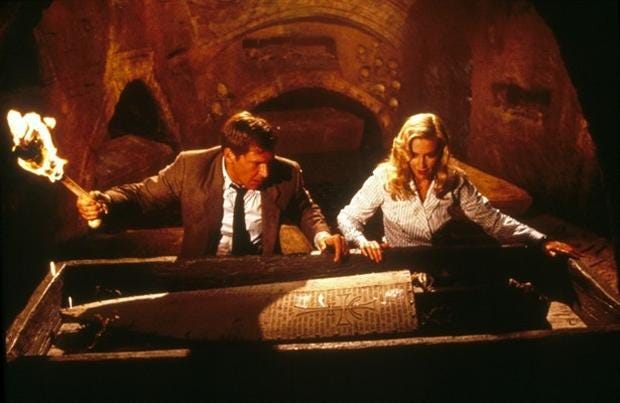
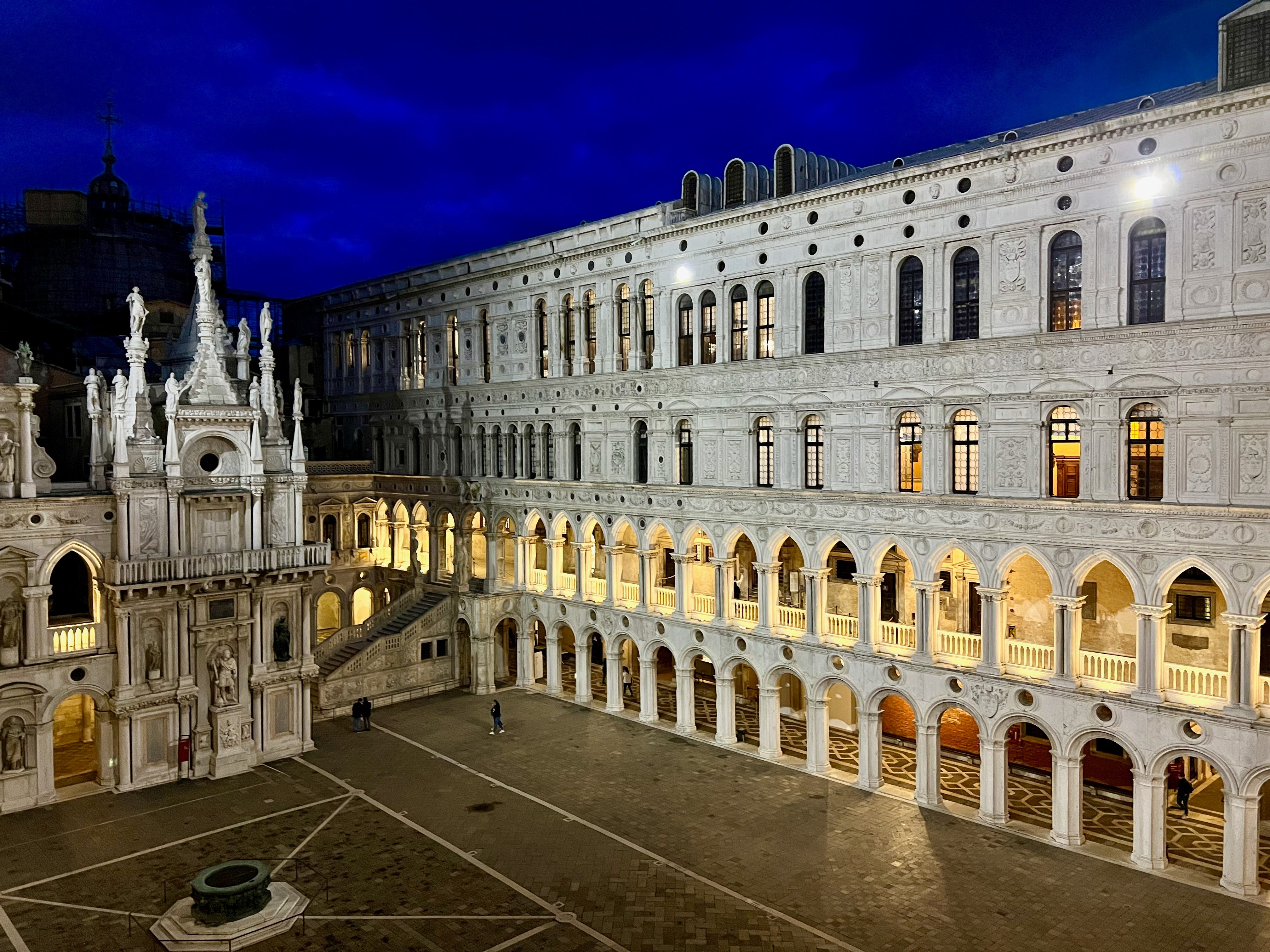
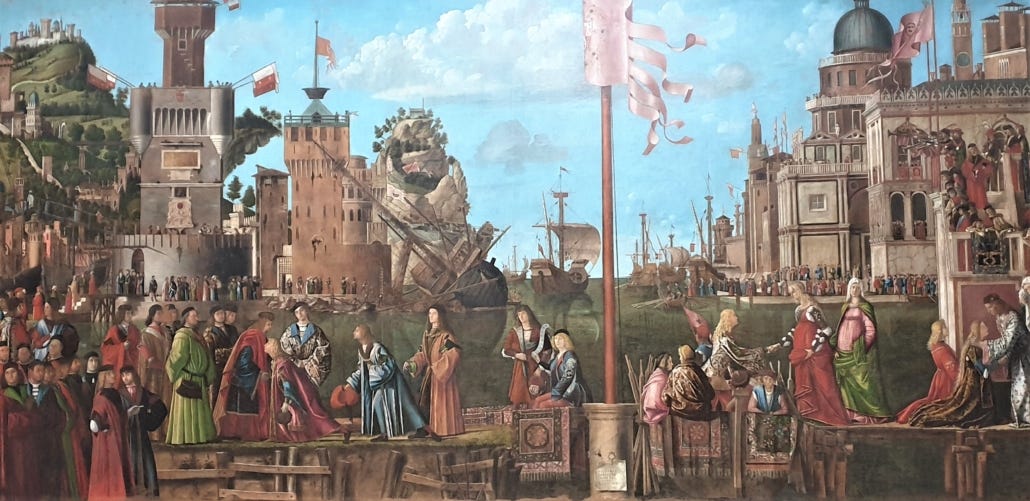
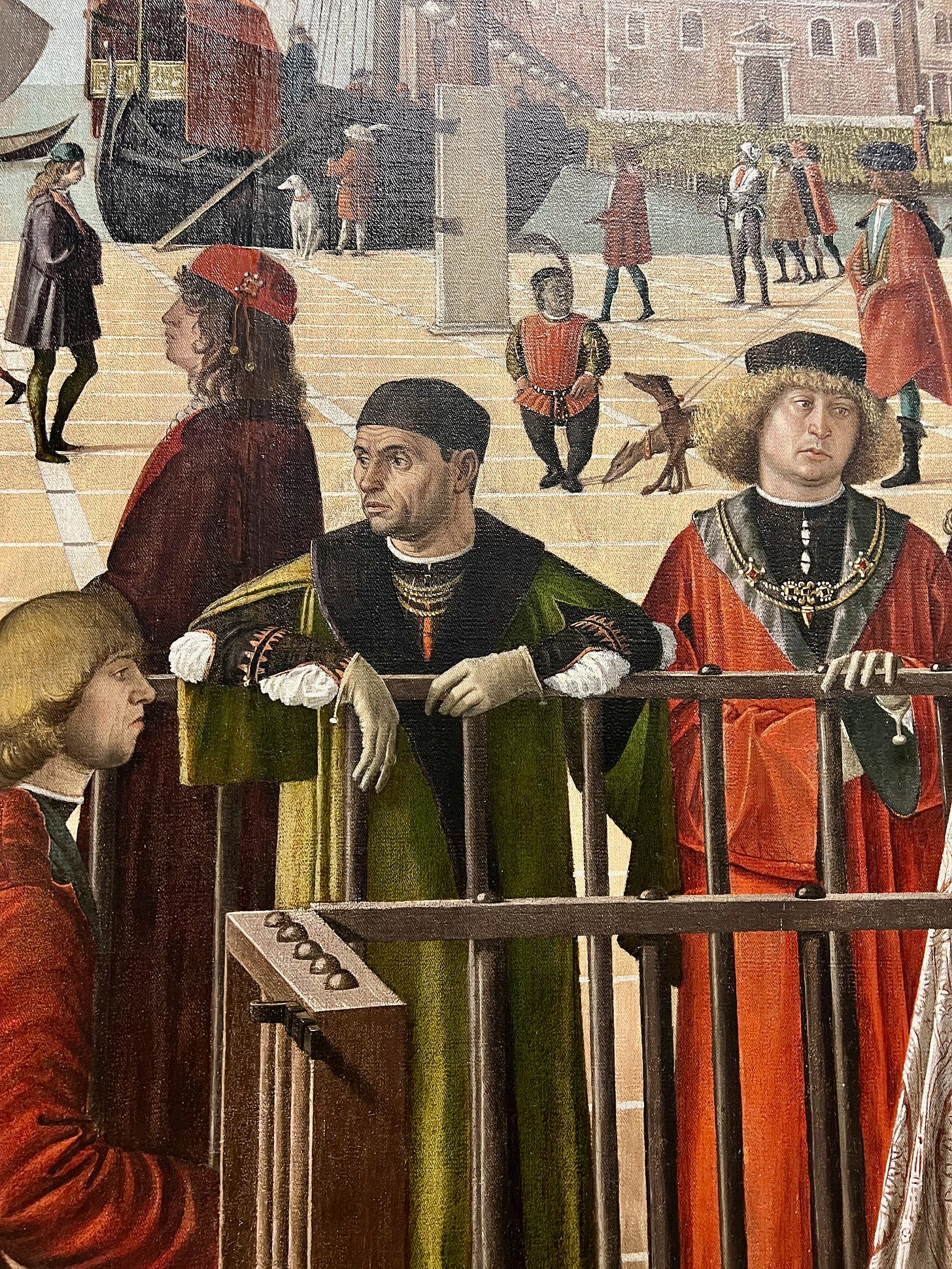
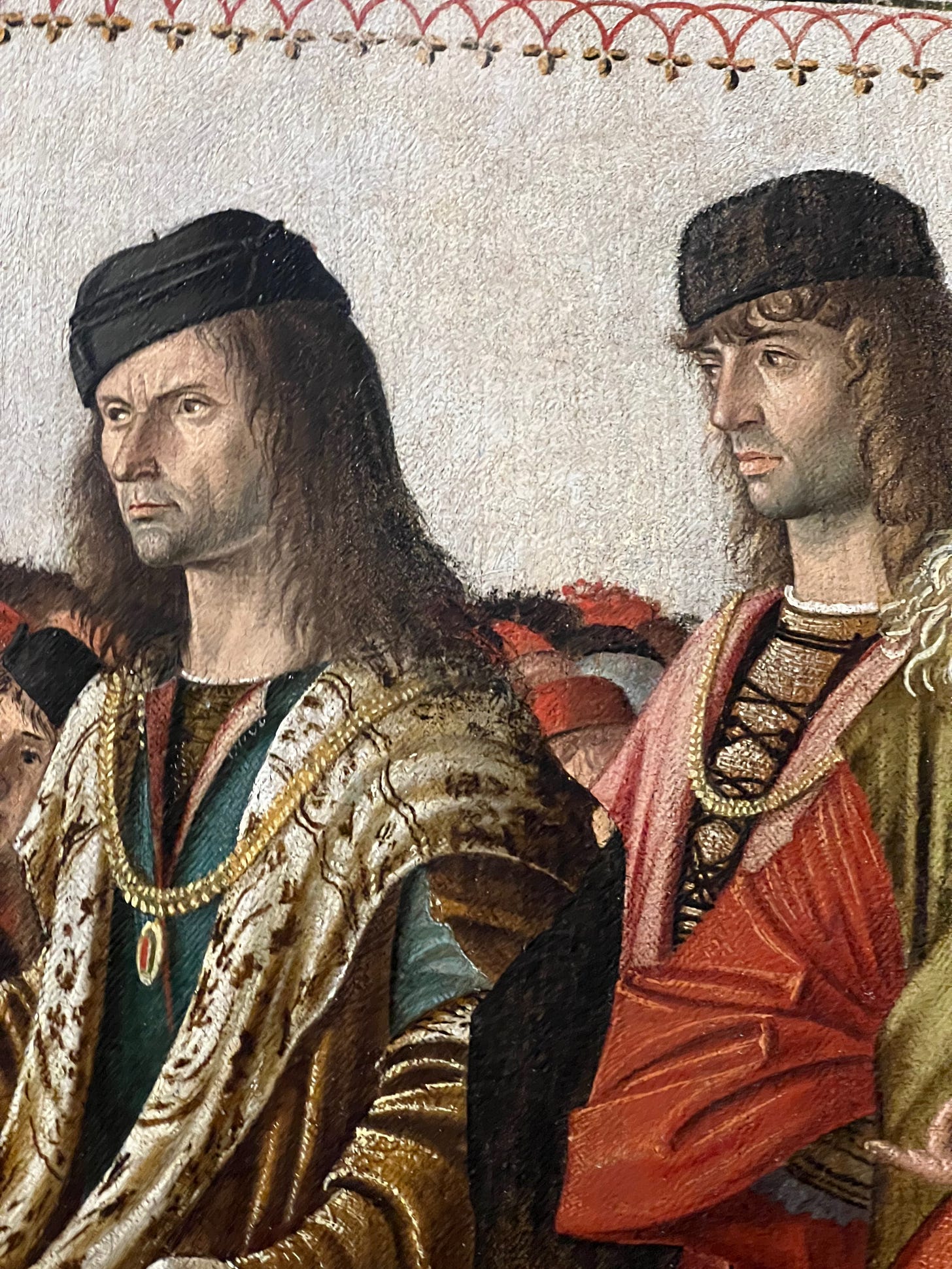
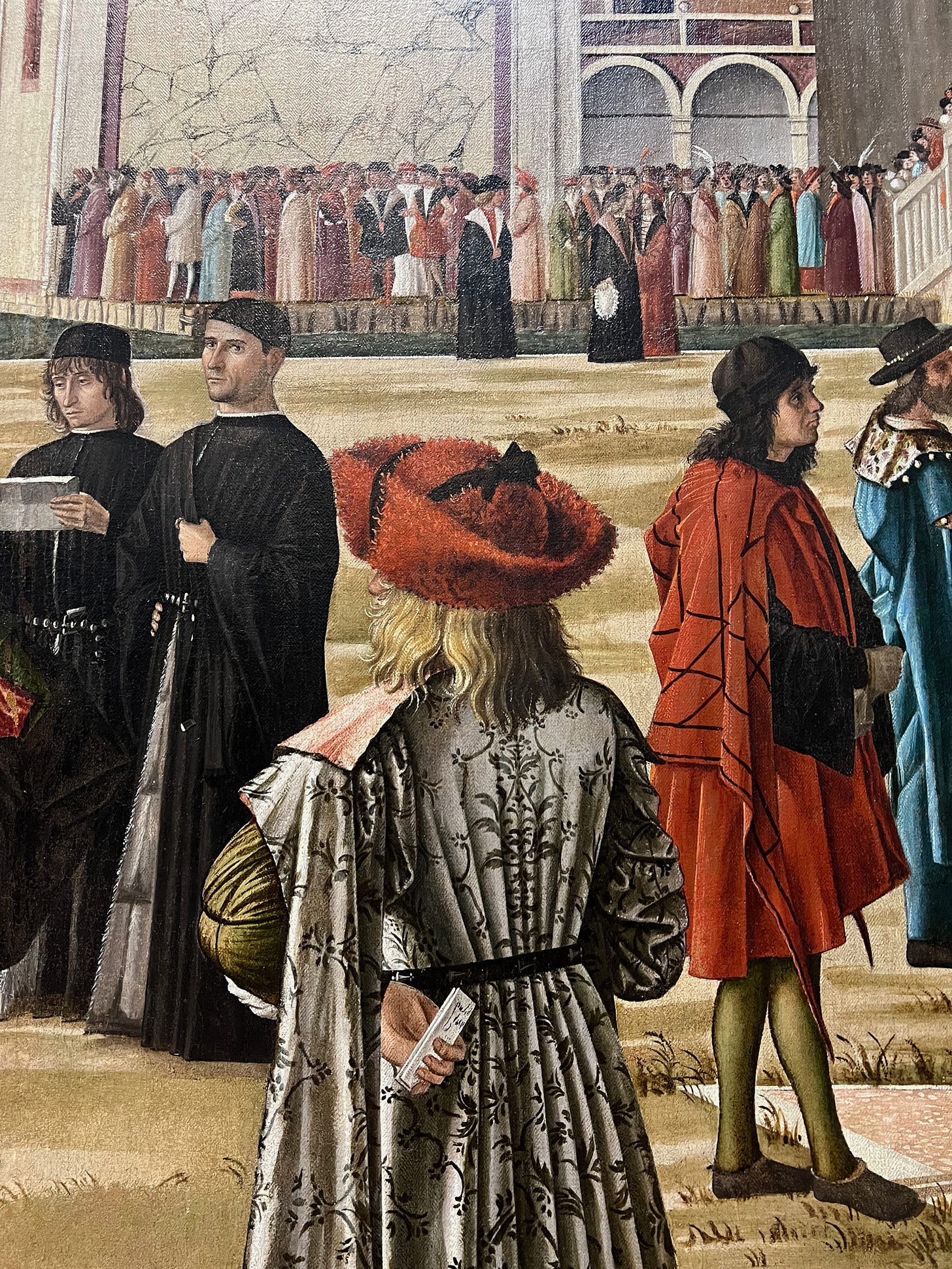
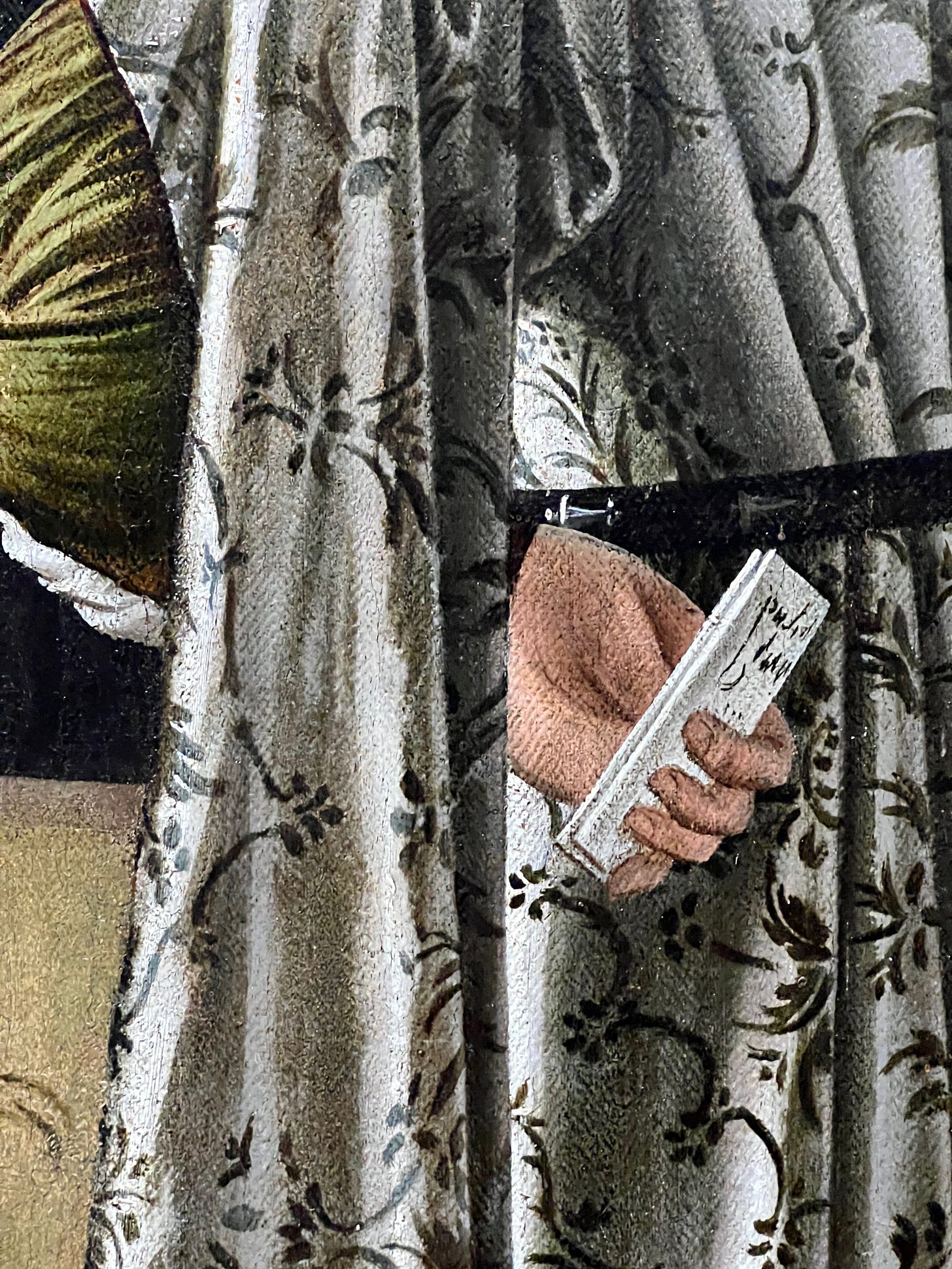
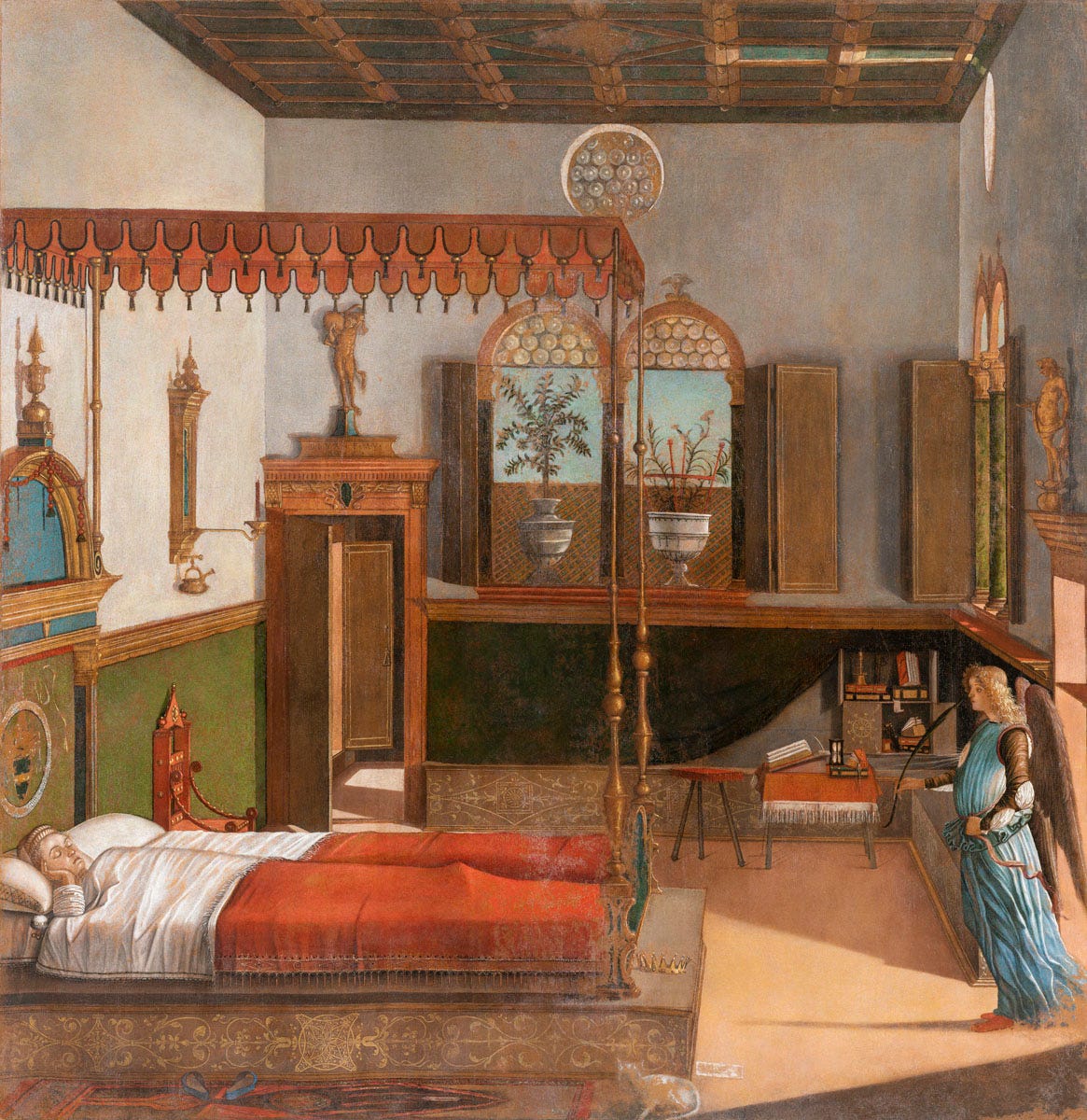
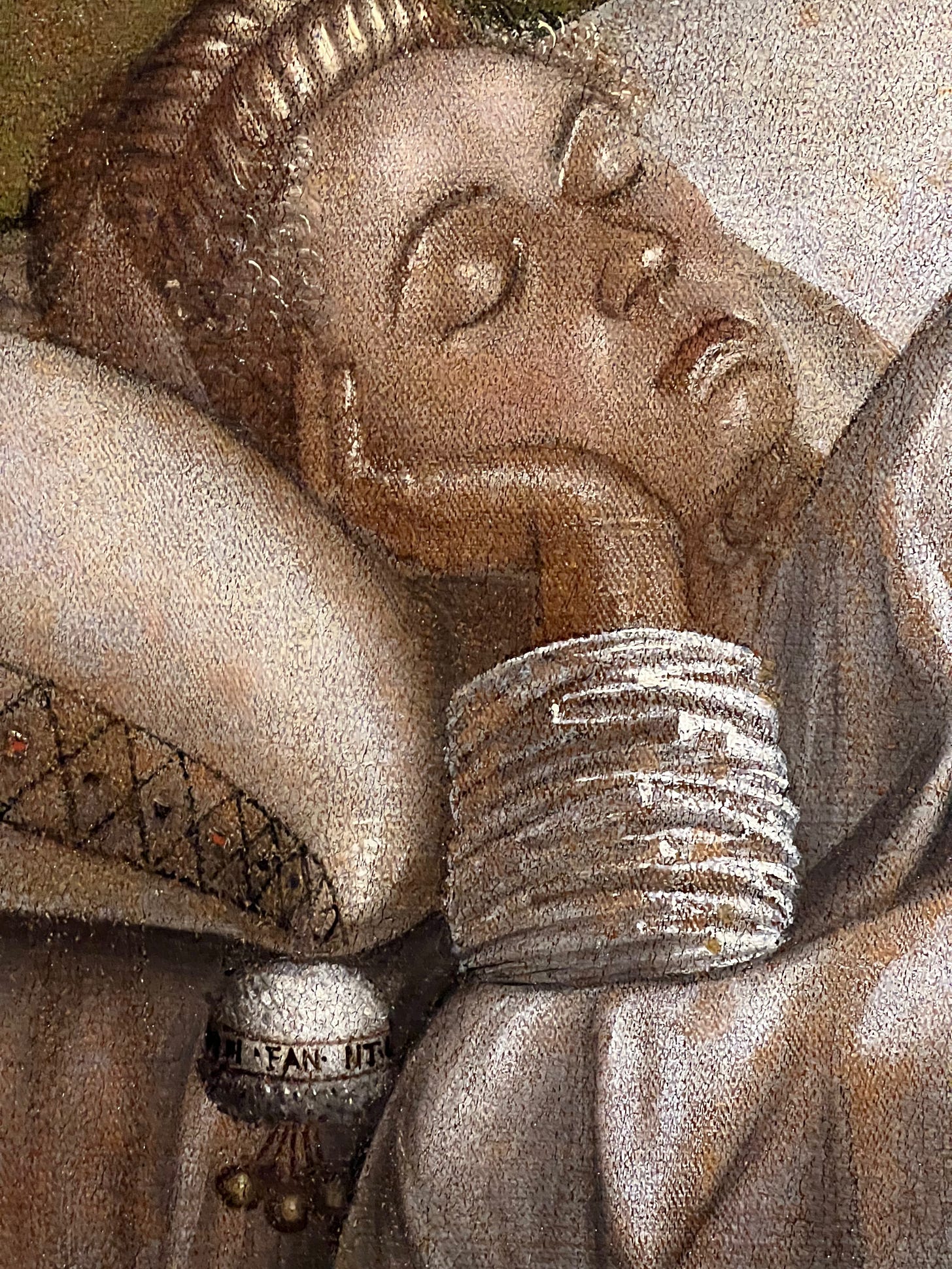

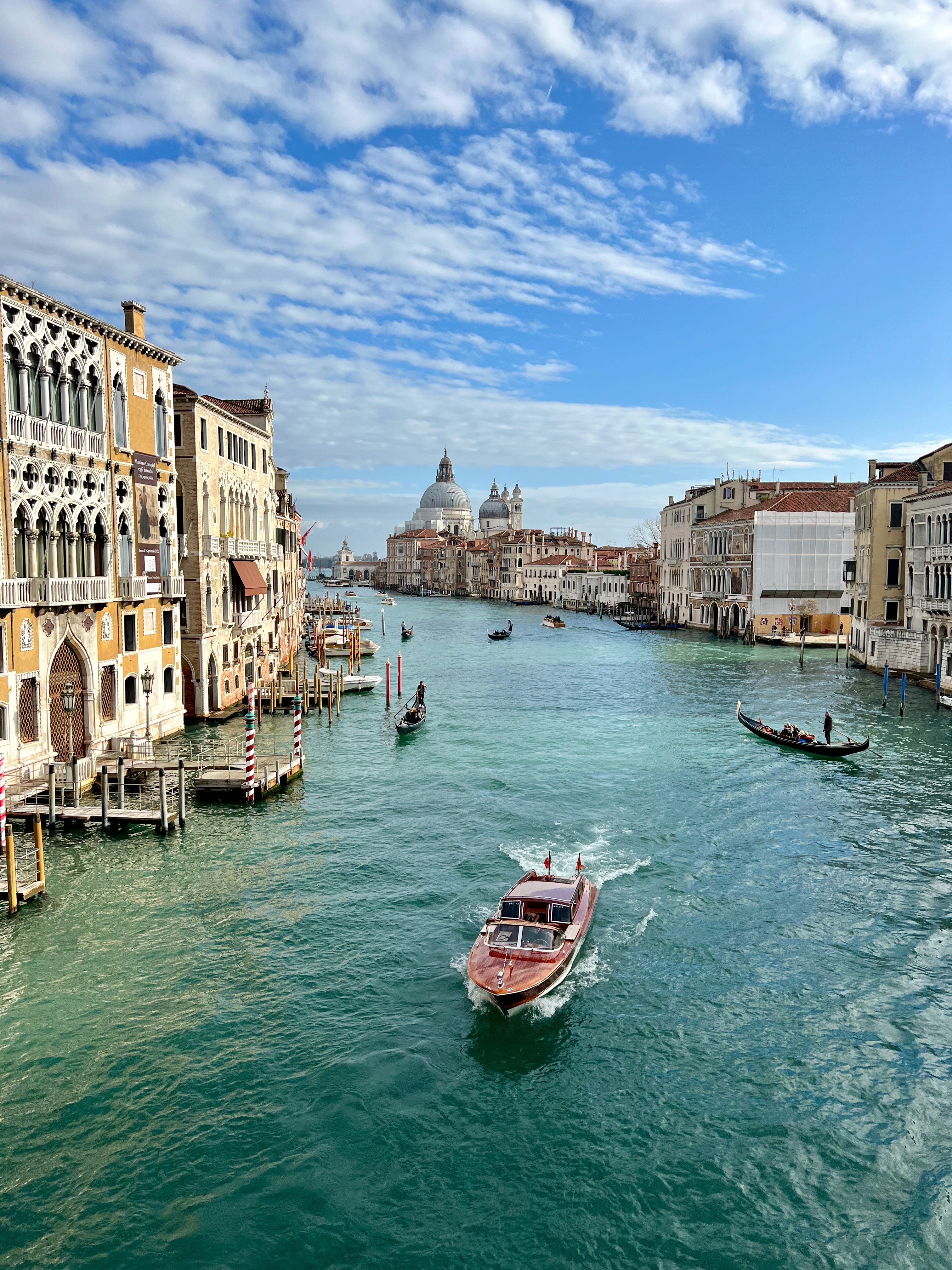
"Reality in Venice is only a point of departure" I love this so much!
I love this Danielle! Mille grazia!